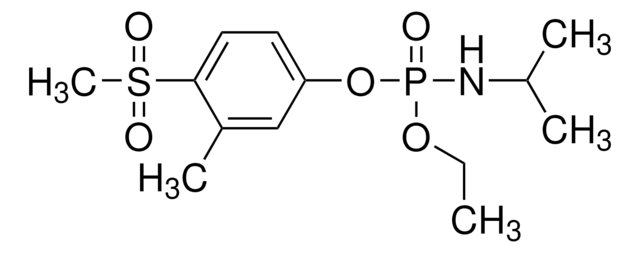W218308
Hydroxyanisole butylé
99%, FCC, FG
Synonyme(s) :
2(3)-t-Butyl-4-hydroxyanisole, BHA, Éther monométhylique de la 2(3)-t-butylhydroquinone, 2(3)-t-Butylhydroquinone monométhyl éther
About This Item
Produits recommandés
Source biologique
synthetic
Niveau de qualité
Qualité
FG
Fragrance grade
Halal
Kosher
Agence
follows IFRA guidelines
Conformité réglementaire
EU Regulation 1223/2009
EU Regulation 1333/2008 & 178/2002
FCC
FDA 21 CFR 117
FDA 21 CFR 172.515
Densité de vapeur
6.2 (vs air)
Pureté
99%
Température d'inflammation spontanée
599 °F
Pf
58-60 °C (lit.)
Application(s)
flavors and fragrances
Documentation
see Safety & Documentation for available documents
Allergène alimentaire
no known allergens
Allergène de parfum
no known allergens
Propriétés organoleptiques
mild
InChI
1S/C11H16O2/c1-11(2,3)9-7-8(13-4)5-6-10(9)12/h5-7,12H,1-4H3
Clé InChI
MRBKEAMVRSLQPH-UHFFFAOYSA-N
Vous recherchez des produits similaires ? Visite Guide de comparaison des produits
Catégories apparentées
Description générale
Application
- Inhibition of NADPH oxidase 2 enhances resistance to viral neuroinflammation by facilitating M1-polarization of macrophages at the extraneural tissues.: This study examines the potential neuroprotective effects of butylated hydroxyanisole (BHA) in modulating immune responses during viral infections of the nervous system, suggesting BHA′s utility in reducing neuroinflammation through macrophage modulation (Choi et al., 2024).
- Highly Sensitive Electrochemical Determination of Butylated Hydroxyanisole in Food Samples Using Electrochemical-Pretreated Three-Dimensional Graphene Electrode Modified with Silica Nanochannel Film.: This study presents a novel method for detecting BHA in food products, emphasizing its role in food safety and quality control, and showcasing advanced material use for enhanced analytical performance (Huang et al., 2024).
- Purification and identification of novel antioxidant peptides derived from Bombyx mori pupae hydrolysates.: While focusing on antioxidant peptides, this research also contextualizes the antioxidant market where BHA is prominently used, underscoring the ongoing search for natural and effective alternatives in food and pharmaceutical industries (Chukiatsiri et al., 2024).
Mentions de danger
Conseils de prudence
Classification des risques
Aquatic Chronic 2
Code de la classe de stockage
11 - Combustible Solids
Classe de danger pour l'eau (WGK)
WGK 2
Point d'éclair (°F)
241.9 °F - Pensky-Martens closed cup
Point d'éclair (°C)
116.6 °C - Pensky-Martens closed cup
Équipement de protection individuelle
Eyeshields, Gloves, type P3 (EN 143) respirator cartridges
Certificats d'analyse (COA)
Recherchez un Certificats d'analyse (COA) en saisissant le numéro de lot du produit. Les numéros de lot figurent sur l'étiquette du produit après les mots "Lot" ou "Batch".
Déjà en possession de ce produit ?
Retrouvez la documentation relative aux produits que vous avez récemment achetés dans la Bibliothèque de documents.
Notre équipe de scientifiques dispose d'une expérience dans tous les secteurs de la recherche, notamment en sciences de la vie, science des matériaux, synthèse chimique, chromatographie, analyse et dans de nombreux autres domaines..
Contacter notre Service technique


